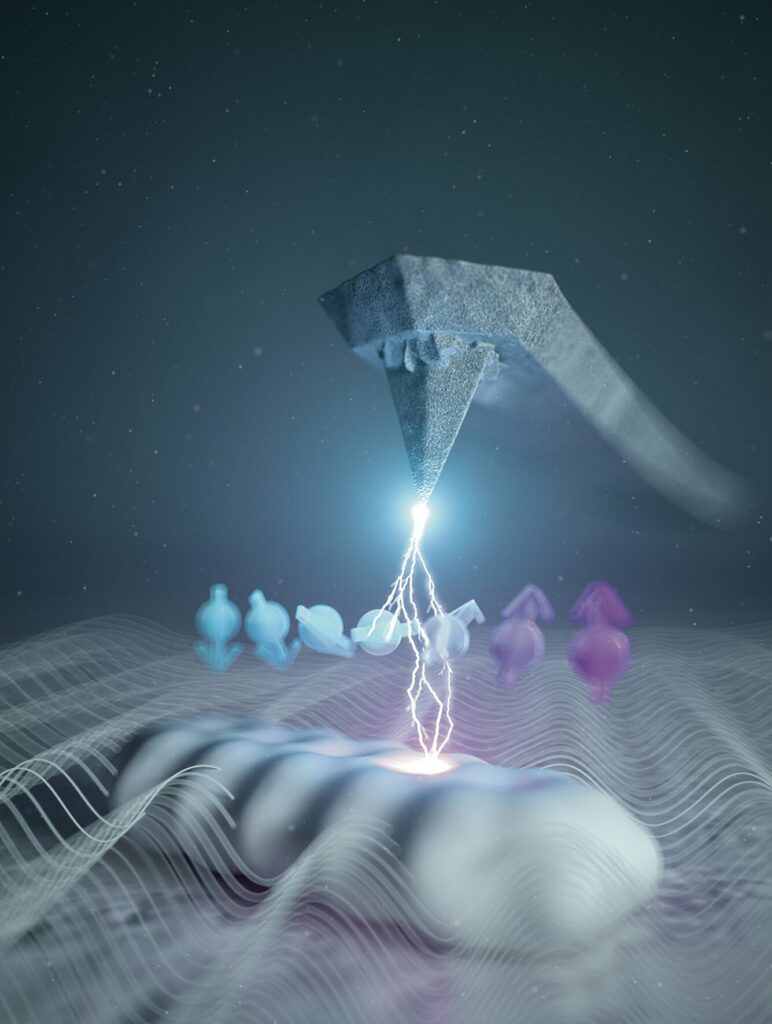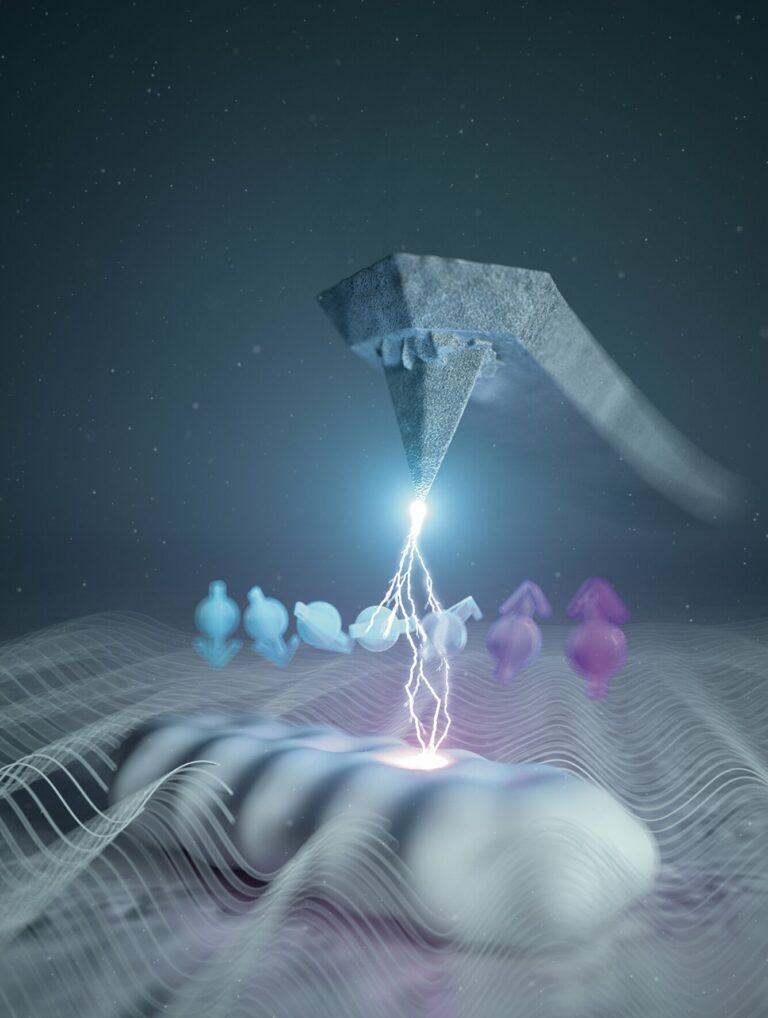A New Microscope Utilizes the Quantum State of Individual Electrons
Researchers at the University of Regensburg have developed a technique to control the quantum state of individual electrons using an atomic-resolution microscope. The findings of this study have been officially published in the journal Nature. Our world, as well as everything within it, is composed of molecules.
These molecules are incredibly small, with even a minute speck of dust containing an immense number of them. The ability to precisely visualize such molecules has become routine with the use of an atomic force microscope, which operates in a manner distinct from an optical microscope, relying on the detection of minute forces between a tip and the molecule being examined.

Utilizing this form of microscope allows for the imaging of a molecule’s internal structure. However, it’s essential to note that observing a molecule in this way doesn’t necessarily equate to comprehensive knowledge of all its distinct properties. For instance, discerning the types of atoms comprising the molecule is already a challenging task.
Fortunately, alternative tools exist for determining the composition of molecules. One such tool is electron spin resonance, sharing principles similar to those employed in medical MRI scanners. In electron spin resonance, a substantial number of molecules are typically required to generate a detectable signal. With this conventional approach, access to the properties of each molecule is limited, and only their average characteristics can be gleaned.
Researchers at the University of Regensburg, under the leadership of Prof. Dr. Jascha Repp from the Institute of Experimental and Applied Physics at UR, have innovatively integrated electron spin resonance into atomic force microscopy.
Crucially, the electron spin resonance is directly detected by the tip of the microscope, ensuring that the signal originates from a singular molecule. This approach enables the characterization of individual molecules on a one-by-one basis, facilitating the determination of the atomic composition of the imaged molecule.
Lisanne Sellies, the primary author of the study, emphasizes, “We could even distinguish molecules that share the same type of atoms but differ only in their isotopes, specifically in the composition of the atoms’ nuclei.” “Moreover, we are particularly intrigued by another potential offered by electron spin resonance. This technique enables the manipulation of the spin-quantum state of electrons within the molecule,” notes Prof. Dr. Repp.
Quantum computers store and process information encoded in a quantum state. For quantum computers to execute calculations, they must manipulate a quantum state without succumbing to information loss, a phenomenon known as decoherence. The researchers in Regensburg demonstrated that their innovative technique allows for the manipulation of the quantum state of spin in a single molecule multiple times before decoherence occurs. Given that the microscopy technique permits the visualization of the individual molecular environment, this newly developed approach holds promise for advancing the understanding of how decoherence in a quantum computer is influenced by the atomic-scale surroundings and, ultimately, how to mitigate it.
This article is republished from PhysORG under a Creative Commons license. Read the original article.
Do not forget to share your opinion with us to provide you with the best posts !




0 Comments